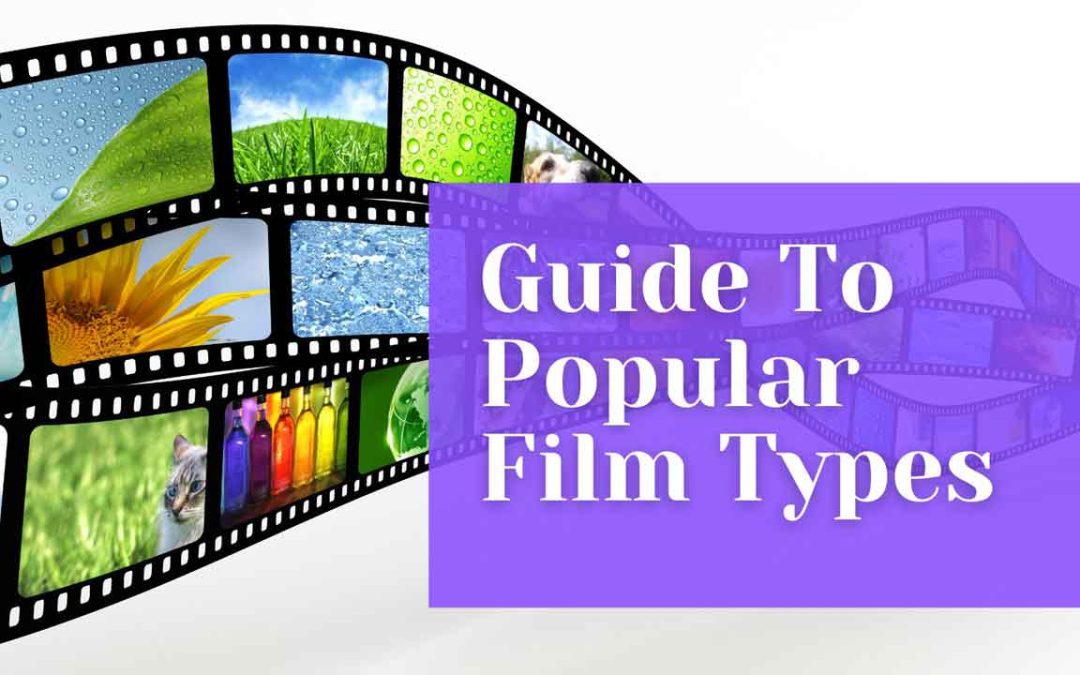Explore the resurgence of film photography with Memory Fortress.
We guide you through choosing the right film to capture your creative vision.
A light-sensitive emulsion is crucial in film photography, as it creates images in color and black and white films.
Key Takeaways
- Versatile Formats: Discover film types from 35mm to medium format for varying image details and artistic expression.
- Impact on Photography: Learn how different films, from black and white to color negatives, shape the aesthetic of your shots.
- Processing Techniques: Understand the significance of proper film processing, which can dramatically affect your final images.
Want To Convert Old Film To Digital Format? Contact Us!
Introduction to Film Photography
Film photography is a timeless and captivating medium that has been a cornerstone of artistic expression for over a century.
Yet, it continues to inspire and influence photographers of all levels.
The unique aesthetic and tactile experience of handling photographic film and the anticipation of developing images offer a creative process that digital photography often cannot replicate.
Whether you’re drawn to the classic black and white film look or slide film’s vibrant colors, film photography provides a rich and rewarding journey into visual storytelling.
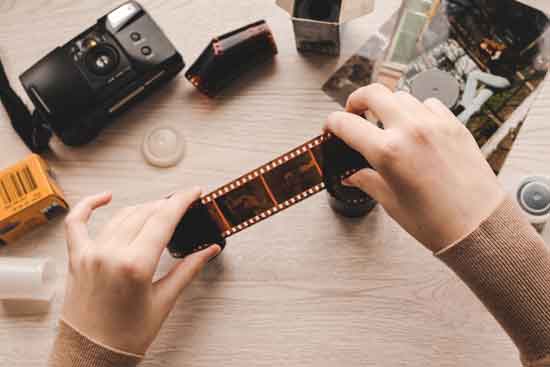
What are the four standard film formats?
When venturing into film photography, understanding the standard film formats can significantly enhance the ability to capture the desired images. Here are the four standard film formats:
- 35mm Film: This is the most standard format in point-and-shoot and SLR cameras. Its accessibility makes it a favorite for hobbyists and professionals due to its balance of quality and ease of use.
- 120 Film: Medium format cameras utilize 120 film, which offers a larger negative film size and provides higher-resolution images. This format is prized for its ability to capture greater detail and depth.
- 110 Film: Eastman Kodak introduced this compact camera format in the 1970s. Though its popularity has waned, it remains a nostalgic choice for specific artistic endeavors.
- 220 Film: This format is similar to 120 films but provides double the length, allowing more shots per roll. It is less common but favored for its efficiency in professional shoots.
Film photography has experienced a resurgence in recent years, with many professional photographers rediscovering the joys of analog photography.
At Memory Fortress, we understand the importance of choosing the correct film type for your creative vision.
This guide explores the various film formats and genres, helping you make informed decisions about your next photographic project.
Film Formats and Sizes
Film formats and sizes play a crucial role in determining the look and feel of your photographs.
With various formats available today, each with unique characteristics, it’s essential to understand their differences.
Here, we will explore the most common film formats and sizes, including 35mm, medium, and large.
35mm Film
35mm film is a widely used format for its versatility and convenience.
35 mm film has a frame size of 24x36mm, making it ideal for everyday, street, and documentary photography.
Its compact size and lightweight nature make it easy to carry around, allowing photographers to capture moments on the go.
Available in various ISO speeds, from low-light sensitive films like ISO 400 to high-speed films like ISO 3200, 35mm film offers flexibility for different lighting conditions and creative needs.
Medium Format Film (120 Film)
Medium-format film, also known as 120 film, is more significant than 35mm film and offers higher resolution and better image quality.
Medium-format film, with frames in various sizes, such as 6×4.5cm, 6×6 cm, or 6×7 cm, is ideal for size and landscape photography.
The larger negative size allows for more detailed images, making it perfect for photographers who require high-quality prints.
The medium-format film is available at various ISO speeds, from ISO 100 to ISO 400, providing options for different lighting conditions and artistic preferences.
Large Format Film (4×5, 8×10, or larger)
Large format film is the most extensive and specialized format, offering unparalleled image quality and resolution.
Large-format film, with frame sizes of 4×5 inches, 8×10 inches, or larger, is ideal for landscape and commercial photography frame sizes.
The massive size of the negatives allows for highly detailed images, making it perfect for photographers requiring the highest image quality.
Available in various ISO speeds, from ISO 100 to ISO 400, large format film is suited for creating stunning, high-quality prints that capture every nuance of the scene.
What are the Different Types of Film Formats in Photography?
Different types of film formats in photography include:
- 35mm film: The most common film format, widely used in point-and-shoot and SLR cameras. Its versatility and accessibility make it popular among photographers of all skill levels, whether they shoot film or use a digital camera.
- 120 film: Medium-format cameras use 120 film, which offers a larger negative size than 35mm. This results in higher-resolution images with increased detail and depth, showcasing the unique advantages of these different types of camera film.
- 110 films: Introduced by Kodak in 1972, this cartridge-based format is designed for compact cameras. While less popular today, it remains a nostalgic choice for some photographers.
- Vest-pocket film: A specific type of 127-roll film, initially designed for the ‘Vest Pocket Kodak’ camera. It was affordable and easy to use, trendy during the Great Depression, and played a significant role in the evolution of compact cameras.
- 220 film is similar to 120 films but double the length, allowing for more exposures per roll. It is used in medium-format cameras for extended shooting sessions without changing the film as frequently.
- Sheet film: This type of film consists of individual sheets loaded into film holders and is used in large-format photography. It is known for producing high-quality images and is often used in professional photography due to its size and expense.
Film processing also impacts the outcome, a critical stage handled with care by specialized photo labs.
The two main types of film processing are C-41 (color negative) and E-6 (slide), each requiring specific chemicals and temperature control for optimal results.
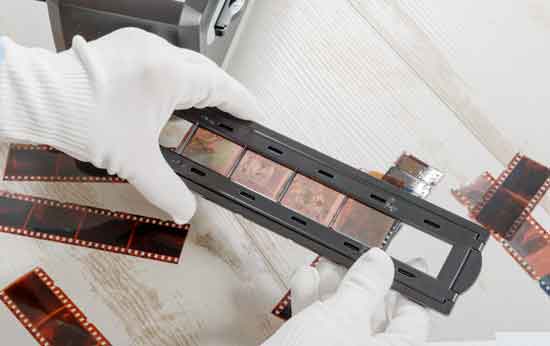
Understanding Different Film Genres for Photography
Color negative film
Color-negative film is the most common type of film used by photographers.
It produces negatives with a wide dynamic range and color palette, suitable for various lighting conditions.
Reversal film
Reversal film, or slide film, yields positive transparencies with rich, saturated colors.
It has a narrow exposure latitude is often chosen for its unique look and feel.
Black and white negative film
Black and white negative film is a classic choice for creating striking monochrome images.
It offers a wide tonal range and can be processed using various techniques to achieve desired effects.
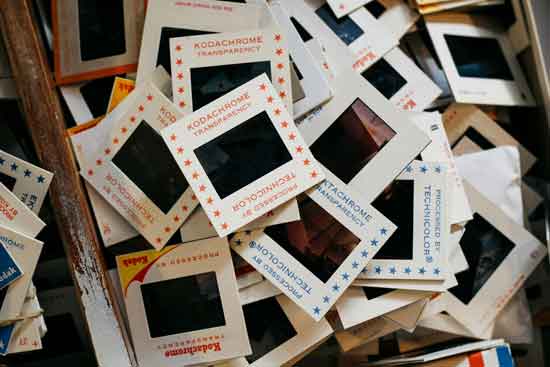
How Do Various Film Types Impact Photography?
Black and white film
Black-and-white film produces timeless, monochromatic images that emphasize contrast, texture, and composition.
This type of camera film showcases its artistic potential, making it a favorite among street and fine-art photographers.
Slide film
Also known as reversal film, slide film produces positive transparencies with vivid colors and high contrast.
It requires precise exposure and is often used for landscape and nature photography.
Negative film
Negative film is the most forgiving film type, offering a wide exposure latitude.
It produces negatives then printed on photographic paper, allowing for adjustments during the printing process, underscoring the value of a skilled photo lab in the photographic workflow.
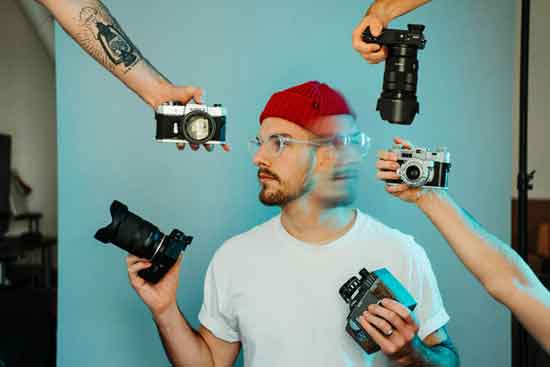
Which Film Compositions Are Commonly Used by Photographers?
Medium format film
Medium format film, such as 120 and 220, provides a more significant negative size than 35mm, a feature particularly appreciated by users of this type of camera film.
This results in superior image quality, making it a favorite among portrait and landscape photographers.
ISO film
ISO refers to a film’s sensitivity to light.
Low ISO films (100-200) are ideal for bright conditions, while high ISO films (400 and above) are better suited for low light situations, illustrating the crucial choice of film stock based on lighting conditions.
Positive film
Positive or slide film produces transparencies that can be viewed directly or projected.
It offers vibrant colors and high contrast, making it an excellent choice for commercial and fine art photography.
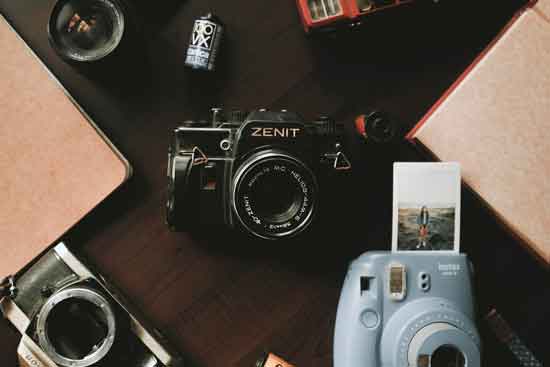
How Does Film Processing Impact the Final Outcome?
Types of film processing
The two main types of film processing are C-41 (color negative) and E-6 (slide). Each development process requires specific chemicals and temperature control for optimal results.
How film speed affects processing
Film speed, or ISO, determines the film’s sensitivity to light. Higher ISO films require less light for proper exposure but may exhibit more grain when processed, a factor many photographers consider when choosing their film stock.
Importance of correct processing for the desired film look
Processing the film correctly is crucial to achieving the desired look from your chosen film type. Incorrect processing can lead to color shifts, contrast issues, and other undesired effects.
At Memory Fortress, we celebrate the diverse world of film photography and the creative possibilities it offers, from traditional photographic film to innovative film stock.
By understanding the various film types, formats, and processing techniques, you can elevate your analog photography game and create images that reflect your artistic vision.
Commonly Asked Questions About Different Types Of Camera Film
Memory Fortress Team

Keith Osbon
Founder/President
Keith Osbon is the founder and President of Memory Fortress.
He has been passionate about preserving his family’s history and launched the company in 2015 to address the vital need that all Americans have.
Before Memory Fortress, Keith worked as a senior executive in digital analytics, starting in 2009.
A former Army captain, he began his post-military career in 1997 as a quantitative money manager for Goldman Sachs and JP Morgan.
Keith has a BA from Duke University and an MBA from the University of Georgia.

Dustin Williams
Office Administrator
Dustin Williams is the Office Administrator at Memory Fortress. He helps oversee the business’s daily operations, assures the high quality of our work, and maintains customer satisfaction.
At Memory Fortress, Dustin ensures that your family’s memories are handled with the same utmost care and consideration he would desire for his family memorabilia.
Dustin has over eight years of experience in customer service, including his time as a Front Desk Supervisor at Hyatt Regency Atlanta.

Lori Griggs
Creative Director
Lori Griggs is the Creative Director for Memory Fortress.
She has been with the company since its inception in 2015 and has focused on photo scanning and old documents.
Lori is an avid researcher; much of our initial equipment came from her recommendations and purchases.
In addition to her contributions to Memory Fortress, she is a talented painter.
She has a BFA from Georgia Southwestern University.

We Serve All Of The United States
It is our pleasure to serve all 50 States.
Our customers rely on us to deliver a top-quality, affordable product with a fast turnaround time.
When you need to convert 35mm film 8mm camcorder videos into the latest digital formats, USB or DVDs, we hope you will choose Memory Fortress.
Visit the order form here when you are ready. > Order Now!
Call us today to place your order: 678-675-0014
Send us a message below if you need additional information.
Nationally
Alabama Arizona Alaska Arkansas California Colorado Connecticut
Delaware Florida Georgia Hawaii Idaho Illinois Indiana
Iowa Kansas Kentucky Louisiana Maine Maryland Massachusetts
Michigan Minnesota Mississippi Missouri Montana Nebraska Nevada
New Hampshire New Jersey New Mexico New York North Carolina
North Dakota Ohio Oklahoma Oregon Pennsylvania Rhode Island

